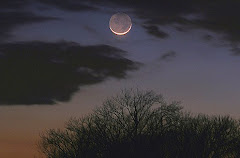As the Sufis well know, movement (especially repetitive motion) can be an ideal way of inducing ecstasy; whereby the body creates its own rhythmic energy channel and doubles as an instrument of inspiration and expression from other worlds. Indigenous people throughout the ages have also tapped into a movement-driven ecstatic experience, often telling stories or reenacting myths through dance; to call up the energies of the story’s elements and give them physical form.
I picked out an interesting book called Dance Imagery for Technique and Performance by Eric Franklin, and have extracted a few key passages that to me have elements of shamanism and spirit expressions through the body. The book offers techniques for visualization as a way of enhancing the experience of movement, dance and physical expression. The book contains a quote from Arnold Mindell, who is an authority on shamanism and has a relationship to our tribe. We used Mindell’s book, “the Shaman’s Body” as one of our assigned texts.
Connections through the Body (P.15):
The native American hoop dance informs us about connections: “A legend tells of a dying man who wished to leave something on earth. The creator gave him a hoop and told him that for each living thing he could create, one more hoop would be added. As he added hoops he became stronger and each year he created other living things. The dancer forms these shapes- a butterfly, a turtle, an eagle, flowers, a snake—showing how all living things are connected and grow and change.” (from American Indian Dance Theater, program notes, Dec. 1993). Everything in the hoop dance is created from the same hoop—circles. One could also think of the human body as circles of interconnected energy.
Exercising with Your Environment (P.47)
Native Images can evoke deep emotional reactions. These images have floated in the eyes of humankind for tens of thousands of years; they are imprinted in our genes. In the grass dances of the American Plains Indians, the dancers become the movement of the tall rippling grass as they stomp the area to create the dance circle.
Discovering Imagery (P.63)
An image that presents itself during a massage or a body session may tell you something about the nature of a particular ache or pain. According to psychologist, Arnold Mindell (1985), founder of process oriented psychology, a bodily symptom is trying to tell you something. The symptom may give rise to an image that can clarify the situation. Imagery seems to be closely related to insight and discovery. The astronomer, Johannes Kepler, in keeping with Plato’s philosophy, believed that his scientific discoveries resulted when images or ideas already in his mind matched external events. Eastern sages such as the Rishis of India, authors of the Vedas, “were men of vision who saw things in their meditation in images often symbolic images which might precede or accompany an experience and put it in concrete form.” Writes Sri Aurobindo (1971, 12). The flow of imagery often results from sensory resources and experiences.







